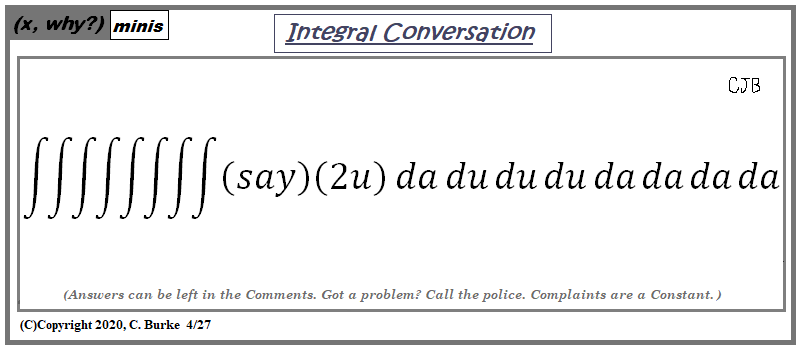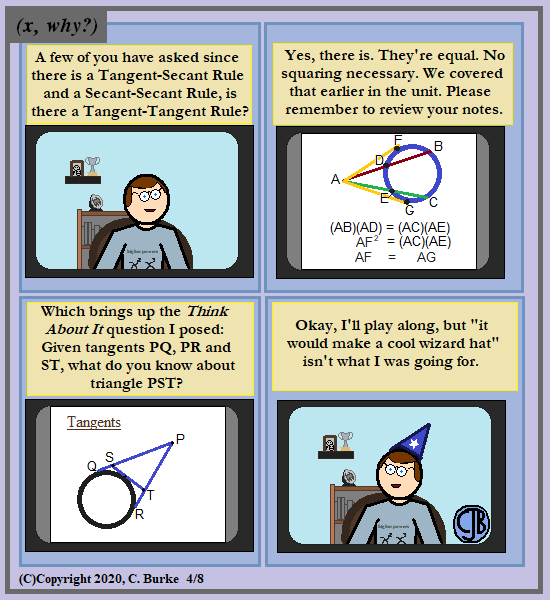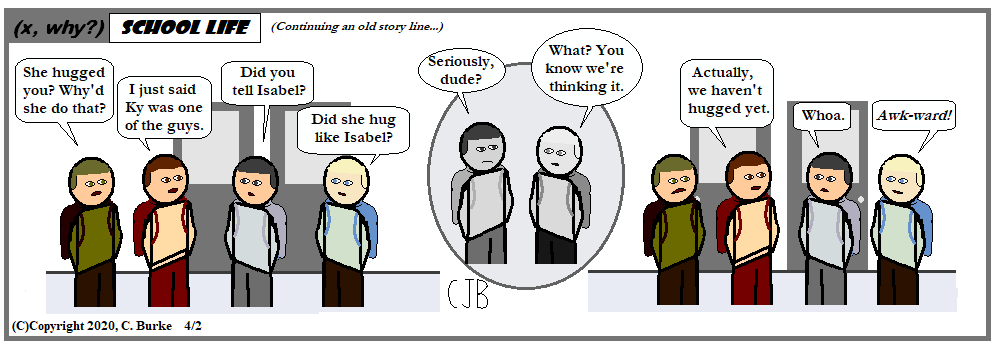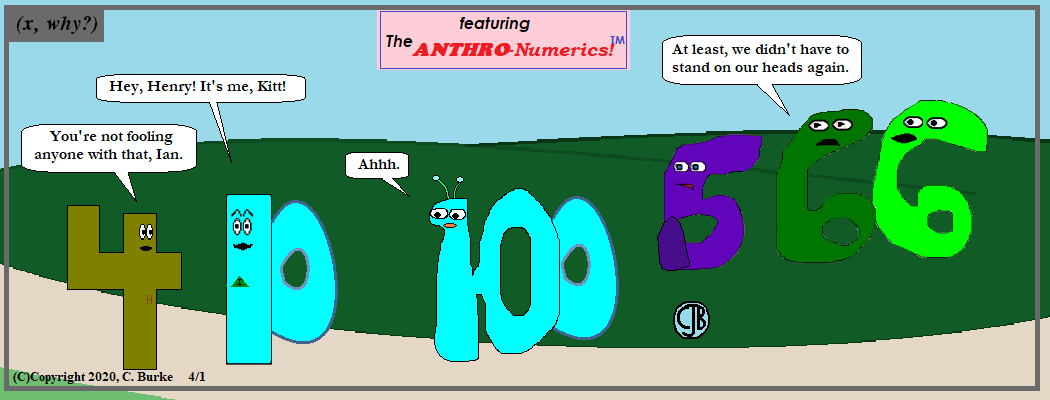Note: Part I of this report appeared Monday, and can be found here.
One of the panels on Friday started off slowly for a few reasons: first, two of the panelists hadn't shown; second, no moderator had been chosen in advance and it didn't appear that either panelist was particularly interested in leading the discussion; and, third, it didn't seem like they had much to say. Basically, they seemed unprepared. Now I know this con was put together quickly, but people were only put on panels that they had shown interest in a month earlier when preparing for the full-scale, on-site convention.
However, this post isn't meant to gripe about any particular panel. What happened, happened, and it told me one thing. Specifically, I needed to be prepared for my panel.
To this end, on Saturday, I sat down with a notebook and mind dumped whatever came into my head about the topic of Serial Vs. Episodic.
I managed to fill an entire page. As luck would have it, I barely had reason to look at it. A few points were fresh in my mind, and the rest didn't matter because of the directions the hour moved.
On the other hand, I still had some thoughts and opinions on the matter. So I'm going to jot them down here. If it's not a topic of interest to you, you might want to back out now. There is no seconfary topics afterward.
Okay, then.
First and foremost, I miss episodic TV. Everything is going serial, and that's not necessarily a good thing. Don't get me wrong: there are good serials out there, and I even enjoy a few of them. But there are so many on cable. And if you don't know about them early enough, you're likely going to just skip it and wait for it on a streaming service.
Episodic TV will never go away, as long as we have sitcoms, and independent stations have schedules that need filling with syndicated programming. If it's evening and you want to relax, but you don't want to start something, what are you going to do? Scroll through the programming guide until you hit Friends or Frasier or Big Bang Theory or Golden Girls. Maybe your tastes from more toward drama and some variation of Law & Order or C.S.I.. You have a story with a start and a finish, and you can switch it off. (Or watch another if you're up for it!)
With serials, it's all or nothing. You're not going to tune into whichever episode is on tonight -- not even if it's a rerun of an episode you've already seen. Out of context, the show loses something. Generally speaking, for me, most of these shows lose something in the retelling. For me, it's one and done. I rarely rewatch them.
In fact, when some of these 10-12 episode series come back after 9 months off the air, my viewing schedule is probably to busy to binge the previous season, to refresh my memory of the characters and the plotlines. Especially if it's going to remind me that nothing of substance happened for nine episodes, so that everything could come to a head in the final episode -- AND THEN there was a cliffhanger anyway! And the "entire season is one story" went right out the window.
This happens in longer, network series as well, when they hire one villain for the season. You know that they will fail to catch them, week after week, until the finale. Some of the show needs to be about something else.
This isn't to say that a show can't have seasonal themes, multi-episode arcs, and character growth. It's not the 60s anymore, so the reset button doesn't need to be hit at the end of every single episode. But have some part of the story start on one show and finish on the same show. And don't undo it the following week.
I had a note in the margin about Marvel's Agents of SHIELD, which had a good season where they went through three story arcs, even doing a callback to the first (Ghost Rider) in the third. There was some good storytelling that year.
By contrast, you have shows like Marvel's Jessica Jones and The Runaways. I thought Jessica Jones was a great show, but the first season got a little formulaic in the middle episodes. Jessica wants to catch Kilgrave, but she won't kill him. Because of this, he continually manipulates her, putting her into situations where she has to let him go so she can save someone else. (Now, okay, a hero won't let the innocent person die in order to catch the villain, but she seems to put herself into that kind of situation, repeatedly.) This problem was compoundd by the person she saved being killed anyway in a later episode, so nothing she did actually mattered. (Then again, that might've been the point that they were trying to hit home. In which case, message received.)
The Runaways is a show I only recently encountered. I'd heard about it, and knew it was somehow comic-related, which knowing anything about the comic. Had it been on the CW or Fox, running for 20 episodes, the first season would've been better. For one thing, so much of the first season could have (and should have) been dealt with in THREE episodes, not ten. And without trying to spoil things, everything again builds up all-eggs-in-one-basket for the finale ... and it ends on a cliffhanger anyways, with the story unresolved.
(Side note: cf Arrow, season 1.)
One of the "probelms" people sight about 22-24 episode shows is that they run out of material, and there's always *that one* episode, every year. Funny thing is, "THAT" episode will be the one that everyone remembers, either because they love it, or they love to hate it. That said, I'll acknowledge that stretching The Prisoner from six to 17 episodes caused a clunker or two.
I'm rambling now, but I covered most of the points I was ready to make, should they come up.
But here's a final note: I grew up watching cartoons, rerun endlessly, and we had no problem watching them again and again. Speed Racer could be repeated viewing forever. On the other hand, when Star Blazers came out, it was something totally new. And then, the second season came on with the the Comet Empire. And then ... it started showing the first season again, and my friends were like, "we already saw this." Not that the handful of us affect the ratings much, but the show was taken off the air withing weeks of starting reruns. Fans didn't need to watch the entire serial again. But maybe another episode of Gilligan's Island ...

















